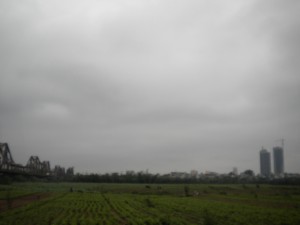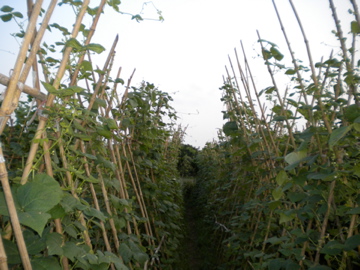And now for the second installment of the Vietnomalies…
Music is always in the air in Vietnam. And every once in a while, this music is coming from the trucks and cars. But I’m not referring to the incessant horns in the city, but to the musical numbers that come from the automobiles as they reverse. I have heard such numbers as “it’s a small world,” “twinkle, twinkle,” a number of Christmas songs (long after Christmas was over) and, my favorite, “Paint with all the colors of the Rainbow” from the Pocahontas movie. I am definitely going to miss this.

One of the reasons I chose to study abroad with SIT was because SIT is known for the independent research project (ISP) that each student is responsible for at the end of the semester. Students spend the last four weeks on their own doing field research, talking with specialists, writing a 20-40 page paper and preparing a 30 minute presentation. There was quite the diversity of topics ranging from an ethnographic study of nuns at a Zen monastery in Dalat to an analysis of Vietnam’s higher education reforms. I focused my research on the issues of food safety looking specifically at the urban and peri-urban agriculture in Hanoi.
Hanoi is undoubtedly a “green city” due to its wealth of agriculture within and surrounding the city. Back in 2002, 42% of Hanoi’s land was being farmed and in 2008, about 27% of the population was employed by agriculture in some way. This is largely possible because Hanoi has established itself as a political and educational center, and not as the industrial center that Ho Chi Minh City has. The city can afford to have much of their space be agricultural, even though it is less economically viable than industrial development would be.
There are also many opportunities for farmers, consumers, and city planners to have agriculture be so close to the urban center. The biggest one is increased food security. As the population in Hanoi grows at a rapid rate, there is going to be an increased demand for food. Urban farmers are able to supply fresh produce more quickly and efficiently than importers. There is an increase in farmers’ access to the markets meaning they don’t have to work through middle-men. There is also a higher level of transparency for consumers, since they often know their farmers personally. There are also many non-quantifiable benefits to urban and peri-urban agriculture: providing much needed green-space for city dwellers, protecting surrounding areas against urban sprawl, increasing bio-diversity, and protecting against flooding and soil erosion to name a few.
Despite the benefits and opportunities of this agricultural space, this space struggles with high heavy metal content in the soil and water, the use of dangerous agrochemicals, and harmful microorganisms such as e coli and salmonella making the harvest unsafe. The most dangerous of these problems is the unregulated use of highly toxic pesticides due to the lack of regulations and restrictions regarding pesticides, the extreme measures that push farmers to use pesticides and increased access to highly toxic pesticides.
I then worked with three organizations that are working to make this urban harvest safe: governmental policies which are working to institute their own Good Agricultural Policies as required by the WTO, a grass-roots NGO that is supporting farmers as they transition to organic vegetable production, and roof-top gardeners using soil-less systems of production. One of the more disconcerting findings is that, currently, safe vegetables are only available to those who can afford them, even though the majority of all consumers regardless of socio-economic status are very concerned with the safety of their vegetables. Furthermore, the government struggles to implement these large scale regulations with an agricultural system that is comprised of small family farms. I have a lot of hope for all of these programs, largely because the demand for safe vegetables is only increasing due to the increased awareness and the opportunity for consumers to pay more for food they trust. Furthermore, Hanoi city planners are making moves to protect this agricultural space, as long as the production is efficient and safe, through Hanoi’s “Green Belt.”

